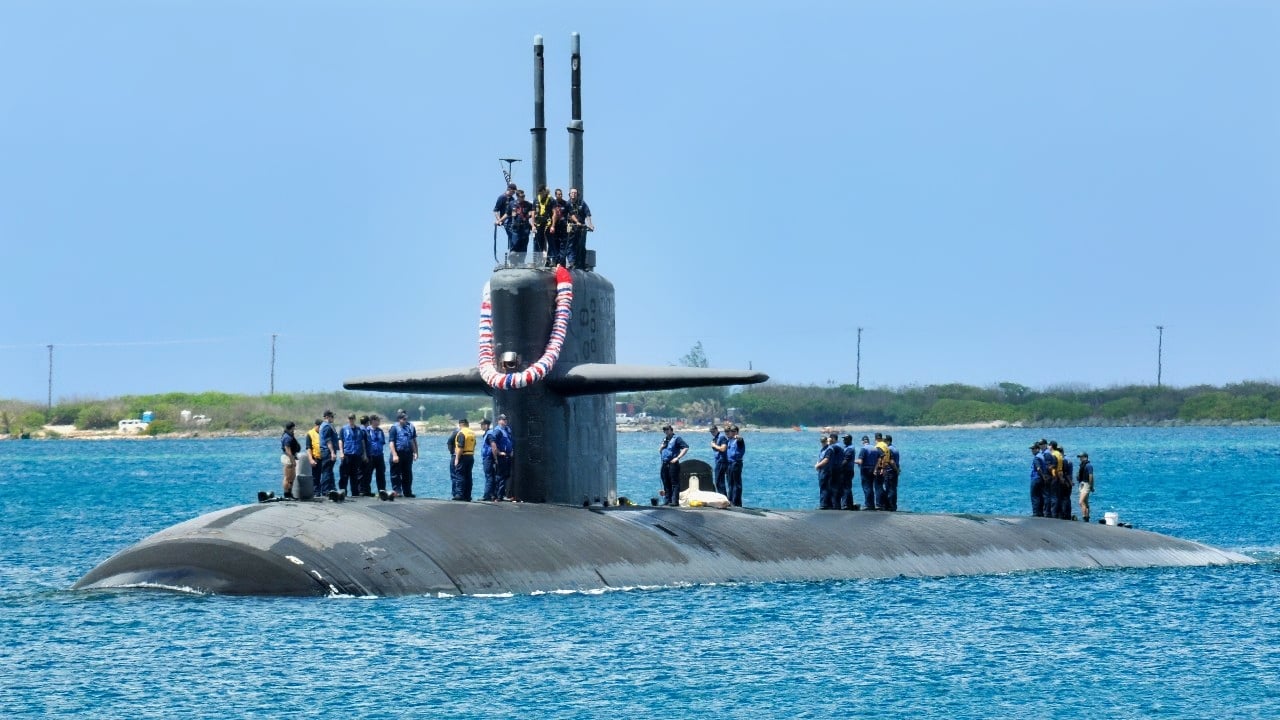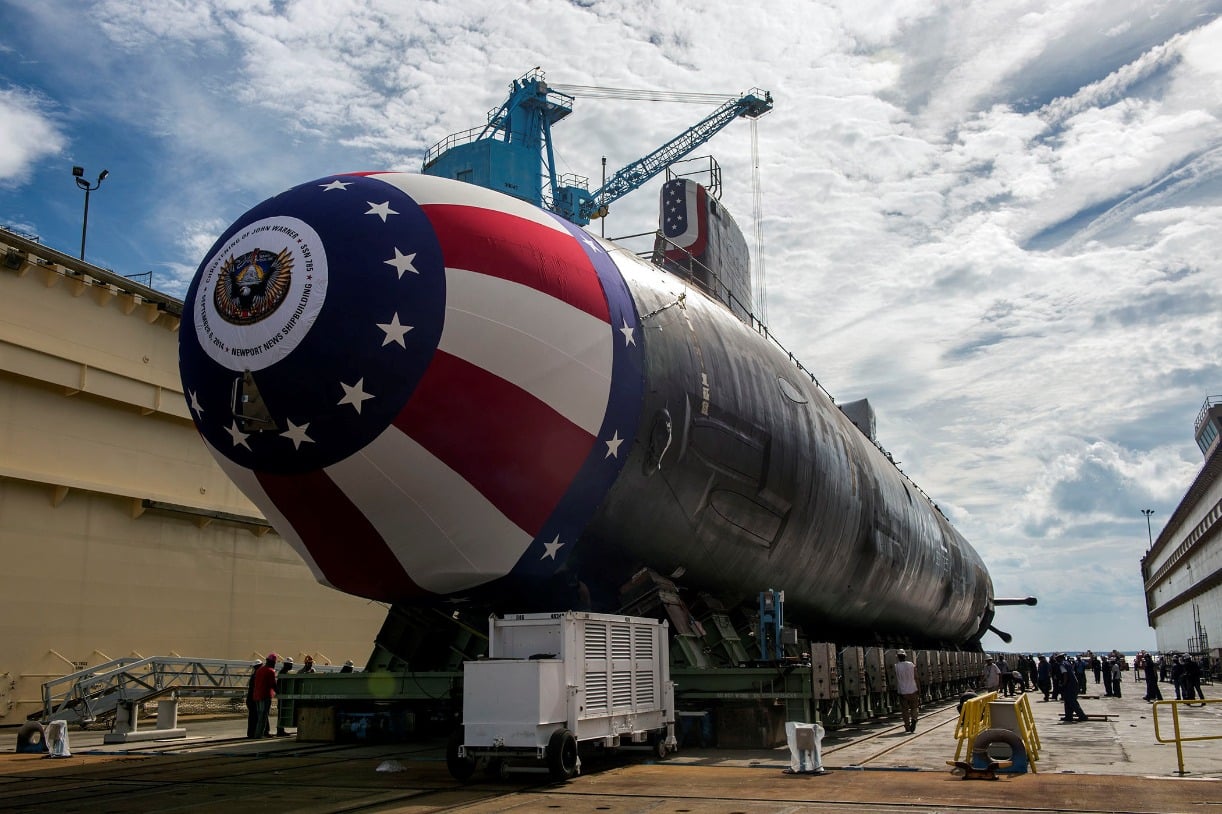$6,200,000,000 SSN(X) U.S. Navy Submarine Nightmare
America’s Congressional Budget Office projected the costs of the SSN(X) to be around $6.2 billion per unit. That’s orders of magnitude higher than the $2.8 billion price tag of the Virginia-class submarines. Because of the high price of the SSN(X), Congress is understandably reticent to commit.
What You Need to Know: The U.S. Navy faces a crisis due to budget constraints and aging infrastructure, leading to a decade-long delay in the SSN(X) submarine program initially planned for 2034.

-This postponement exacerbates existing gaps in America's undersea capabilities, as the Navy struggles to maintain its current submarine fleet and cannot meet production demands for Virginia-class submarines.
-The SSN(X) is deemed too expensive at $6.2 billion per unit, and the Navy's shipyards are ill-equipped to handle such projects.
-The article argues that instead of investing in costly future platforms, the Navy should focus on modernizing shipyards and enhancing current capabilities, including unmanned undersea vehicles, to address immediate threats.
Why the U.S. Navy Should Abandon the Costly SSN(X) Submarine Program
The U.S. Navy is in crisis. Its needs and ambitions cannot be met by America’s ailing infrastructure. One such victim of this painful reality has been the Navy’s proposed SSN(X) program. Planned for a construction start date of 2034 and an inaugural deployment nine years later, the Navy has decided to delay the program by a decade due to budgetary and shipyard limitations.
Even now, the Navy cannot meet baseline obligations for keeping its submarine force going, let alone throw in a new requirement for an entirely new platform like the proposed SSN(X).
A delay in the SSN(X) program, which was partly to focus resources on the ongoing DDG(X) destroyer program (itself a nightmare), will create severe gaps in America’s undersea capabilities.
The Pentagon is spinning this negative news as somehow a positive. Some of the proponents of the SSN(X) insist the delay will allow the advanced technologies that undergird this platform more time to mature.
Color me skeptical.

Then again, the Navy has been struggling with its undersea capabilities ever since it failed to build the Seawolf-class submarines they had initially planned to construct. When the Cold War ended, Congress balked at the large price tag for the Seawolf and basically nixed the program after only a handful were built.
Meanwhile, the Navy continues struggling to build the Virginia class, even as the older Los Angeles-class attack submarines continue being retired at alarmingly high rates.
The SSN(X) is Too Expensive
America’s Congressional Budget Office projected the costs of the SSN(X) to be around $6.2 billion per unit. That’s orders of magnitude higher than the $2.8 billion price tag of the Virginia-class submarines. Because of the high price of the SSN(X), Congress is understandably reticent to commit.
Even if they weren’t, though, the Navy’s shipyards cannot meet the demand for these systems.
The real focus for the Navy should not be purchasing another expensive weapons platform to fight tomorrow’s theoretical wars. Instead, the Navy must focus on reliably countering real threats today.
The Navy should focus its efforts on rapidly expanding and modernizing America’s broken shipyards. That would address the root cause of all the branch’s problems: failed infrastructure.
And the SSN(X) program is a wholly unserious effort by the Navy.

You know it is when enthusiasts for the program online start walking about the system as addressing the needs of warfare in some ambiguous future.
This, of course, begs the question: What if the future of warfare is not as Navy designers think?
The Future of Warfare is Never What They Think It Is
Consider the dreams of Washington’s warfare fantasists with the realities of war. No one in the 1990s, save for a handful of counterterrorism experts, believed that AK-47-wielding Islamists in the caves of Afghanistan would become America’s primary threat in the 2000s.
Similarly, everyone a decade ago still believed that the U.S. military would be a permanent counterinsurgency and counterterrorism force. Few people thought that the ubiquitous weapons of the Global War on Terror would be the improvised explosive device for the terrorists and the unmanned aerial vehicle for the Americans. It’s best not to get too far in the weeds of dream warfare and to focus instead on the practical.
The Navy has capable platforms already.

For the aging Los Angeles-class submarines, it is bizarre that these boats aren’t being sold to the Australians to keep them in use. For the Virginia-class submarines, the Navy cannot even produce more than two, just barely, a year because of the unfolding disaster at America’s shipyards. If the Navy can’t produce the systems it needs now, how will it ever produce the complex SSN(X)?
Sure, the underlying technologies for the proposed SSN(X) sound pretty cool. Rumor has it that the Navy wants to include biomimetic propulsion systems. These are engines that basically replicate the movement of undersea wildlife to make it harder for enemy submarines to track the SSN(X).
What the Navy Needs
The Navy wants to integrate unmanned undersea vehicles with the proposed SSN(X), too. This is akin to what the Air Force plans to do with their Next Generation Air Dominance (NGAD) sixth-generation manned warplane and advanced UAVs (the Loyal Wingman system). As I noted about the NGAD, though, why not cut the middleman out entirely and just beef up the Navy’s UUV capability, eschewing the onerously costly SSN(X) altogether?
We are living in an age of austerity. The Navy, like the rest of the United States, cannot afford the lavish lifestyle it has become accustomed to. If it continues trying to live that dream, it will end in a nightmare.
It’s time to kill the SSN(X) program for good.
Author Experience and Expertise: Brandon J. Weichert
Brandon J. Weichert, a National Interest national security analyst, is a former Congressional staffer and geopolitical analyst who is a contributor at The Washington Times, the Asia Times, and The-Pipeline. He is the author of Winning Space: How America Remains a Superpower, Biohacked: China’s Race to Control Life, and The Shadow War: Iran’s Quest for Supremacy. His next book, A Disaster of Our Own Making: How the West Lost Ukraine, is due October 22 from Encounter Books. Weichert can be followed via Twitter @WeTheBrandon.
All images are Creative Commons or Shutterstock.
From the Vault
Russia Freaked Out: Why the U.S. Navy 'Unretired' the Iowa-Class Battleships
Battleship vs. Battlecruiser: Iowa-Class vs. Russia's Kirov-Class (Who Wins?)


